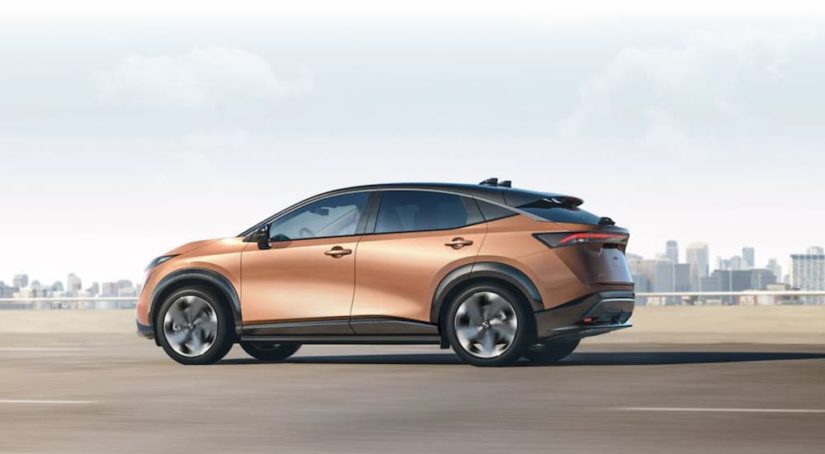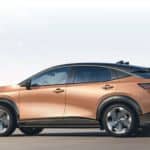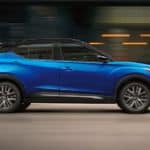Introduced in 2010, the Nissan Leaf has quietly become a powerhouse in the domestic electric vehicle (EV) market. While certain other brands headed by Mars-obsessed CEOs might make all the headlines, Nissan’s popular EV is the undisputed leader of the resale market, with the Leaf accounting for nearly 28 percent of all used EV sales. Cost certainly plays a role, with the Leaf ringing in at $34,000 less than the Tesla Model S, but the overall message is hard to ignore: consumers want more EV options, and they want them now. Fortunately, searching for a “Nissan dealer near me” will give you those options.
In addition to its two versions of the popular Leaf, Nissan recently announced the Ariya, an all-electric crossover SUV that will debut towards the end of 2021 and is aimed at the higher end of the EV market. Expected to start at around $40,000, the Ariya is a well-equipped offering on a mission to beat the luxury EV stalwarts at their own game. The five-passenger EV has a range of around 300 miles and will come in several distinct models, from a base 215 horsepower version to a decidedly more powerful version that boasts 389 horsepower and e-4ORCE all-wheel drive.
With the Ariya, Nissan is entering the higher end of the EV market, not only under the hood but inside the cabin as well. The EV’s slate of technological features includes all the basic driver assistance systems consumers have come to expect. However, it also offers Nissan’s new hands-free ProPilot 2.0 semi-autonomous driving system and ProPilot Park automated parking technology. Further, the Ariya will feature Nissan’s innovative e-Pedal system, a bold reimagining of the traditional pedal system, allowing drivers to use a single pedal to accelerate, decelerate and stop.
First revealed at the 2019 Tokyo Motor Show, the Ariya will hit the Japanese market in mid-2021 with an as-of-yet unannounced U.S. release to follow later in the year. While the Ariya might not be on the lot of your local Nissan dealer just yet, that just means you have plenty of time to do your research and decide if Nissan’s entry into the higher end of the EV market is right for you.
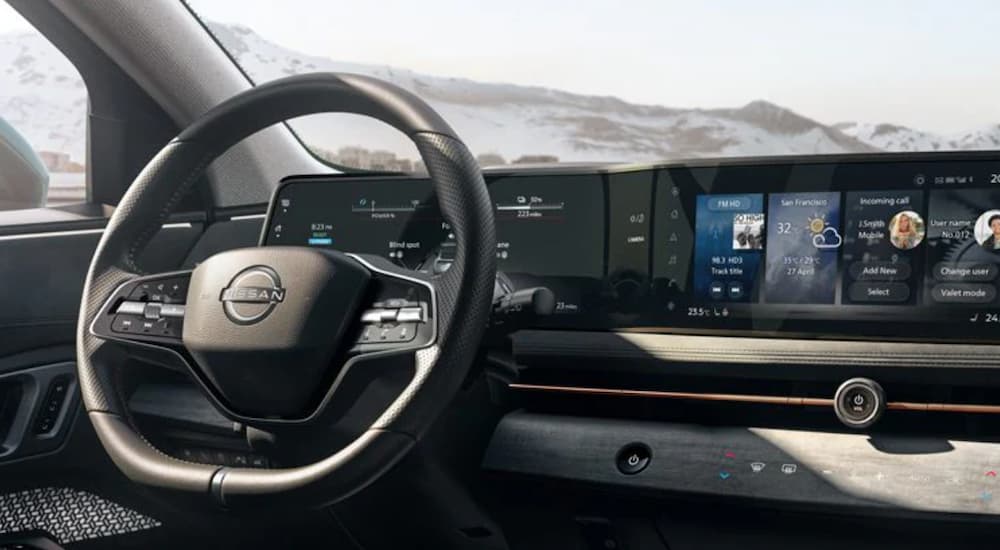
Styling Takes Center Stage
At first glance, it’s hard to ignore the bold, futuristic styling of the Ariya, which the car manufacturer says is inspired by the aesthetic of “Timeless Japanese Futurism.” Wider and lower than the Nissan Rogue compact SUV, the new EV has a markedly sporty look and is further differentiated by its lack of simple, angular lines. If this wasn’t enough to set it apart, the more organic, fluid chassis is complemented by a solid front grille that features an updated Nissan logo, marking the Ariya as the first of a new breed in the manufacturer’s lineup. With slim LED headlights and one long horizontal brake light, there’s no mistaking the Ariya for anything but a step forward in design terms.
While the all-electric Nissan Leaf has garnered plenty of support on the more affordable end of the EV market, the Ariya is a step above in terms of both performance and amenities. This is especially evident when it comes to the crossover’s infotainment system, which employs a unique dual-screen setup that makes information sharing both a safer and more seamless experience. The twin 12.3-inch instrument and infotainment screens on the Ariya’s dash are connected to each other, allowing information sharing between the two displays. Front seat passengers can use their screen to look up nearby points of interest, then send their information over to the driver’s display to provide real-time navigation info without the risk of distracted driving.
The Ariya’s central dashboard display has a few tricks of its own, including a haptic touchscreen climate control system integrated into the vehicle’s paneling that disappears when not in use. The wood-paneled haptic controls, which any smartphone user will recognize from its distinctive “click” feeling, give drivers the tactile feedback one gets from a traditional control dial with the added customization only possible on a digital interface.
The Ariya will also feature Nissan’s patented Zero Gravity seats, a slim yet supportive seating system that maximizes headroom and legroom without sacrificing comfort. Inspired by NASA’s research into zero gravity’s effect on the human muscular-skeletal system, the seats were developed in partnership with a leading Japanese university and are designed to support 14 individual pressure points along the spine. The result is improved blood flow and a reduction in muscle tension, which will leave both drivers and passengers feeling more refreshed after long rides.
Long Range and Plenty of Power
Of course, it’s the efficiency and powertrain credentials that attract many buyers to the EV sector, and the Ariya is no slouch in those departments either. With two available battery sizes and optional AWD, the Ariya offers a range of different driving experiences and price points to meet the needs of a wide range of drivers.
Two different battery packs are available – a 63 kWh Standard Range battery and an 87 kWh Long Range battery. The current Nissan Leaf is also sold with two different battery capacities, but it tops out at only 62 kWh. However, unlike the Leaf, the Ariya will be available in both front-wheel drive and all-wheel drive. Nissan’s e-4ORCE system makes use of a second electric motor for the rear wheels, providing four-wheel traction for bad weather. The top Nissan model also offers 389 horsepower, giving it the sort of impressive performance you would expect from a high-end EV model.
The all-electric Ariya will give drivers a range of around 300 miles on a single charge, according to early estimates from Nissan. While the exact figure will depend on the configuration, the 300-mile ballpark would put the Ariya near the top of its class from a mileage standpoint, with comparable offerings from Volkswagen, Audi, and Jaguar topping out around the 250-mile mark. The Ariya is also flexible when it comes to mobile charging, with the ability to recharge at 110-volt, 240-volt, and DC fast-charging stations.
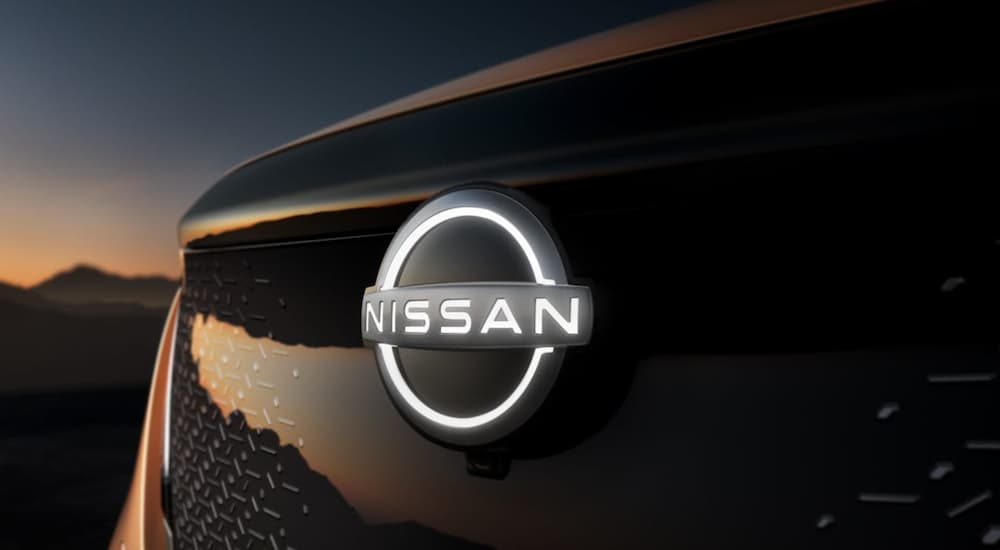
The Future of Semi-Autonomous Driving
Nissan’s ProPilot Assist 2.0 driving assistance system will come standard on the Ariya. Built on Intel’s Mobileye technology, the ProPilot system has evolved since debuting in 2016 and now includes a host of autonomous driving features specifically aimed at providing a smooth, safer highway driving experience. By using a network of cameras, radars, and sonar sensors, ProPilot 2.0 allows for a degree for autonomous driving that goes well beyond archaic cruise control. The system is specifically designed for use on highways, where the navigation system can be enabled to maneuver the vehicle without any input from the driver.
The ProPilot system monitors the driver’s attention, allowing them to switch to a semi-autonomous mode as long as they’re still focused on the road and able to take control at any time. While semi-autonomous driving is undoubtedly the future, Nissan is still working out some of the kinks with the ProPilot 2.0 system, which currently can only be used on divided highways that Nissan has high-definition 3D maps of. It is also not suitable for environments such as tunnels and highway interchanges.
A Bold New Entry From a Leading EV Manufacturer
With the Ariya, Nissan is taking a bold step into the higher-end of the EV market. The attention to detail in terms of styling, technology, and performance immediately mark the crossover SUV as a serious entry in the fiercely contested segment and serve as a strong indication that Nissan is all-in on the burgeoning all-electric trend. With a debut slated for later this year, be sure to check in with your local Nissan dealer soon for the chance to experience what the future of driving may hold.
